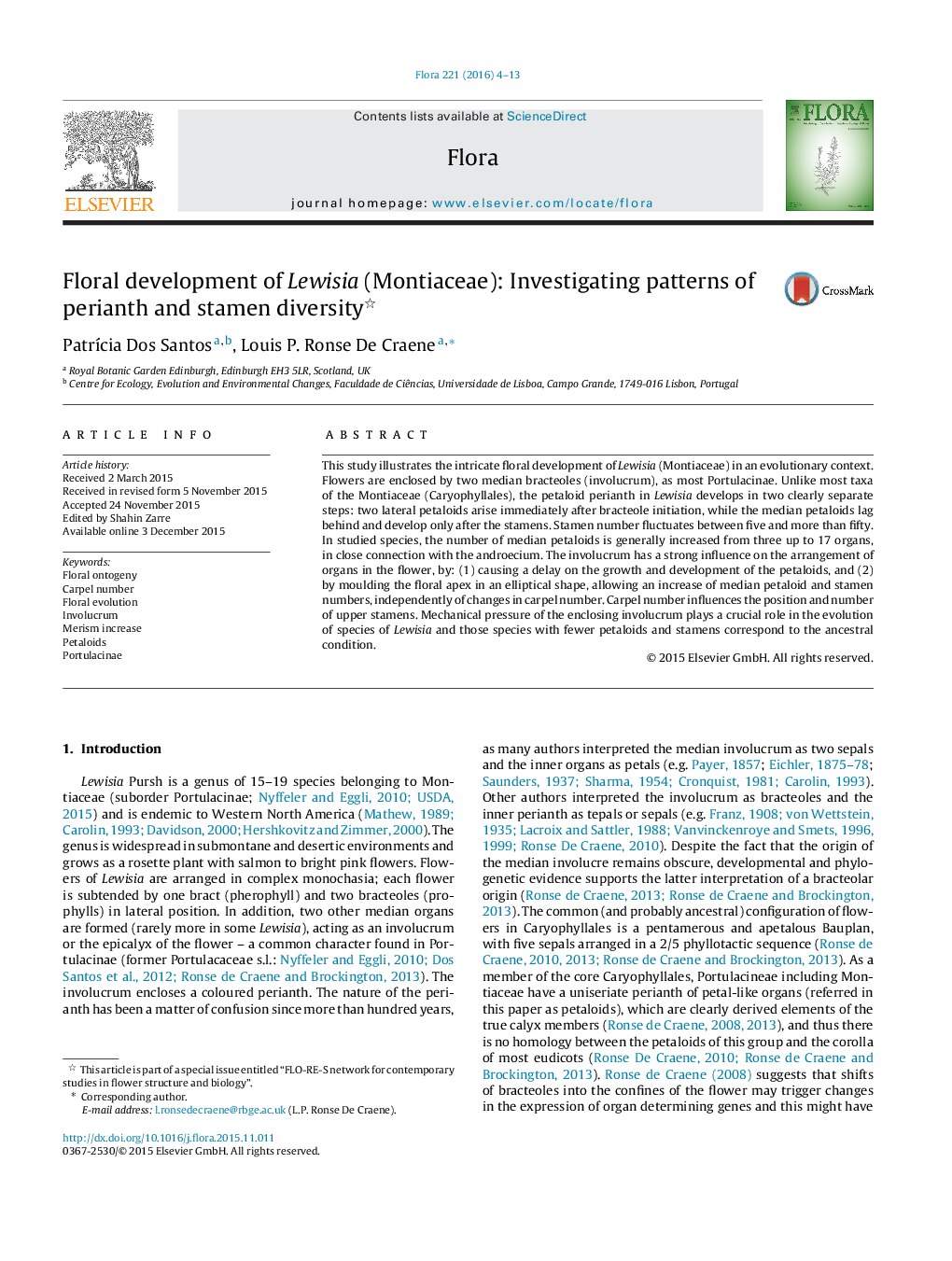| Article ID | Journal | Published Year | Pages | File Type |
|---|---|---|---|---|
| 2179353 | Flora - Morphology, Distribution, Functional Ecology of Plants | 2016 | 10 Pages |
•Involucrum and carpel pressure cause instability in petaloid and stamen number.•Development of petaloids of Lewisia is derived within Montiaceae.•Lateral and median petaloids differ in emergence timing, despite their homology.•The involucrum is key to number, insertion, and delay in initiation of petaloids.
This study illustrates the intricate floral development of Lewisia (Montiaceae) in an evolutionary context. Flowers are enclosed by two median bracteoles (involucrum), as most Portulacinae. Unlike most taxa of the Montiaceae (Caryophyllales), the petaloid perianth in Lewisia develops in two clearly separate steps: two lateral petaloids arise immediately after bracteole initiation, while the median petaloids lag behind and develop only after the stamens. Stamen number fluctuates between five and more than fifty. In studied species, the number of median petaloids is generally increased from three up to 17 organs, in close connection with the androecium. The involucrum has a strong influence on the arrangement of organs in the flower, by: (1) causing a delay on the growth and development of the petaloids, and (2) by moulding the floral apex in an elliptical shape, allowing an increase of median petaloid and stamen numbers, independently of changes in carpel number. Carpel number influences the position and number of upper stamens. Mechanical pressure of the enclosing involucrum plays a crucial role in the evolution of species of Lewisia and those species with fewer petaloids and stamens correspond to the ancestral condition.
